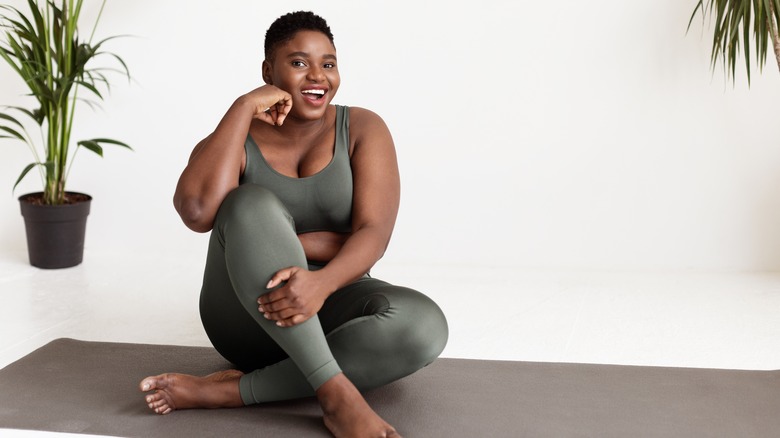How To Practice Gratitude In Your Everyday Life
From a young age, many of us were raised to say thank you, and most of us carry on with this practice into adulthood. Whether we say it to a stranger holding open the door for us, to a waitress bringing us more water, or to a friend who shows up in a time of need, saying "Thank you" is a practice we have adopted easily. Although saying "Thanks" to others is quite easy, have you ever tried to turn your gratitude inward? Showing gratitude is an act that has enormous benefits and it can help us all to keep perspective. Actively being thankful works to calm our nerves and pull us out of the darkness for many reasons (via Whitney Rehabilitation Care Center).
There are many reasons why gratitude works to make us happy and more fulfilled. First, it is incredibly difficult to be grateful and upset at the same time. Second, if you are spending time focusing on the things you love in your life, you're less likely to have time to focus negative attention inward. Although being thankful goes hand-in-hand with seeing the positive, it shouldn't be confused with toxic positivity. The difference is that thankfulness allows a person to pay tribute to the good without saying that absolutely everything is perfect, says HelloGiggles. It's specific. It's simple. And it's a practice we should all be putting into our daily routine.
1. Start and end your day with gratitude
It's common for many of us to wake up and dread the workday in front of us or the responsibilities we have that day. Instead of beginning your morning in this way, consider opening your eyes from your nightly sleep and coming up with three things you're thankful for before even leaving your bedroom. Start small. Maybe you are thankful for your pet, your family, or the sunrise. No matter how small the things you are thankful for seem, naming them forces you to start your day with gratefulness.
In addition, add the magic of three to your nighttime routine. This type of mindset isn't easy for everyone and should be viewed as a long-term project (via Power of Positivity). Be gentle with yourself and inject a little bit of thankfulness at a time and notice gradual mood improvement each day.
2. Begin and maintain a gratitude journal
One of the most beneficial ways to incorporate gratitude into your day is to begin a gratitude journal. This is a way to start and end your day with thankfulness, but also a way to make your gratitude stick.
Instead of being general with what you write in your journal, Happify recommends getting specific. For example, instead of saying you are thankful for your house and your family, write down something specific. Write down which room in the house makes you feel the calmest or what a specific family member did to make your day better. Being specific allows you to open up your gratitude to many different areas of your life.
3. Turn your gratitude inward
You've probably heard a few times in your life that it is impossible to take care of others if you don't care for yourself first. This same rule applies to gratitude. Whether you thank your body out loud for all that it does for you or you write down your thanks after a great yoga class that helped you find emotional balance and peace, turning your thanks inward is essential for taking care of your mental well-being (via Yoga Basics).
4. Say thank you
Beginning your practice by mentally and physically acknowledging what you are thankful for is a great start. However, another powerful act is to apply the act of gratitude outward to the people who make your life better. For example, write a card, send an email, or verbally say thank you for something someone has done for you, says Shape. It will brighten their day, and it will work to create a community of thankfulness that they may pay forward.
5. Being gratitude meditation
In order to properly care for yourself and others, giving yourself the gift of the quiet pause of meditation is a fantastic way to get into the gratitude mindset. Sit quietly, breathing in and out at an even pace. When you're ready, try to incorporate some short mantras to repeat in your head while you're meditating. You can start broad and then get specific depending on your needs that day.
Headspace says that gratitude meditation is the act of honoring small or large blessings in your life. It allows you the space for thought and the peace for relaxation.





